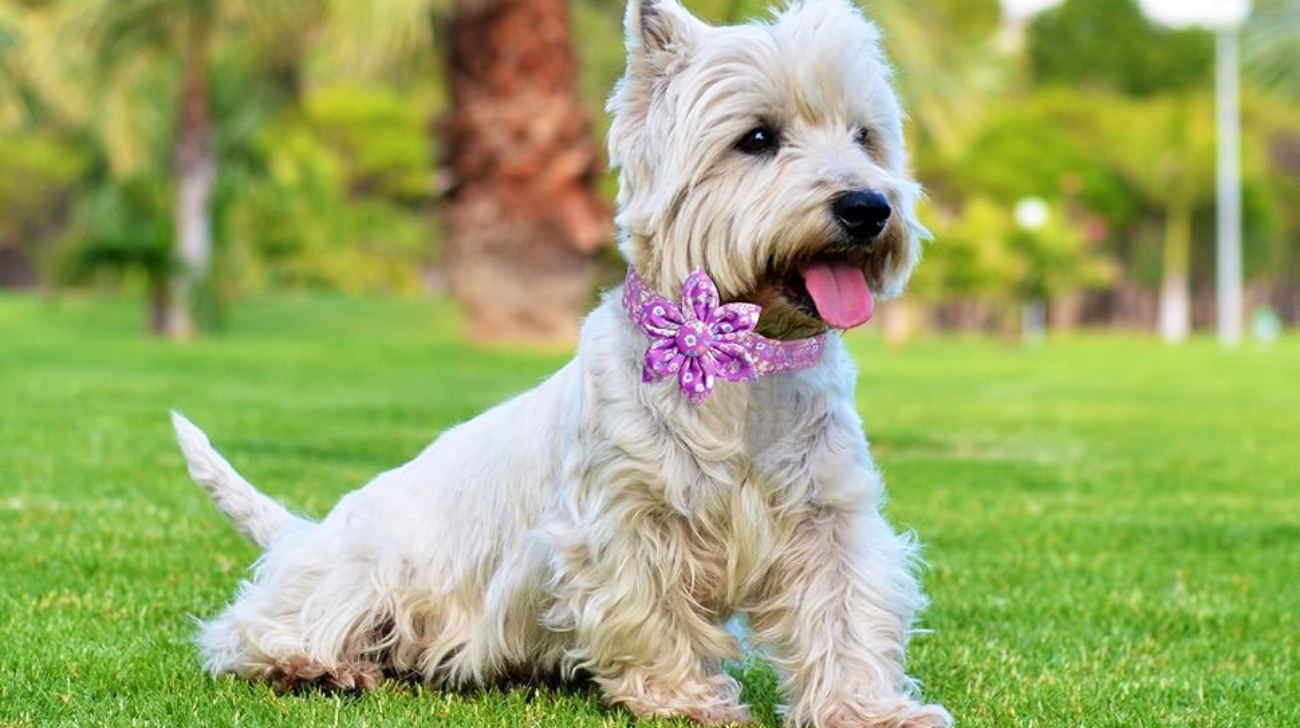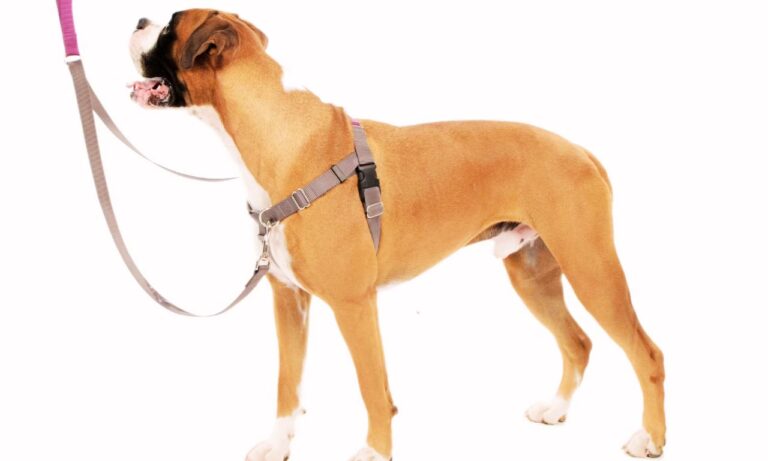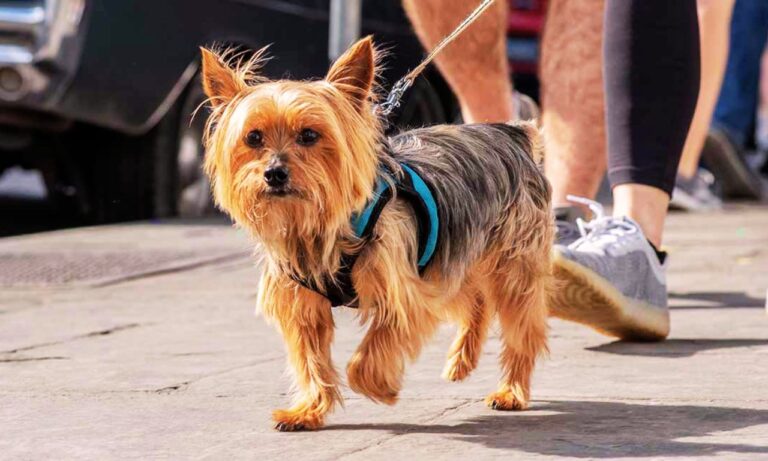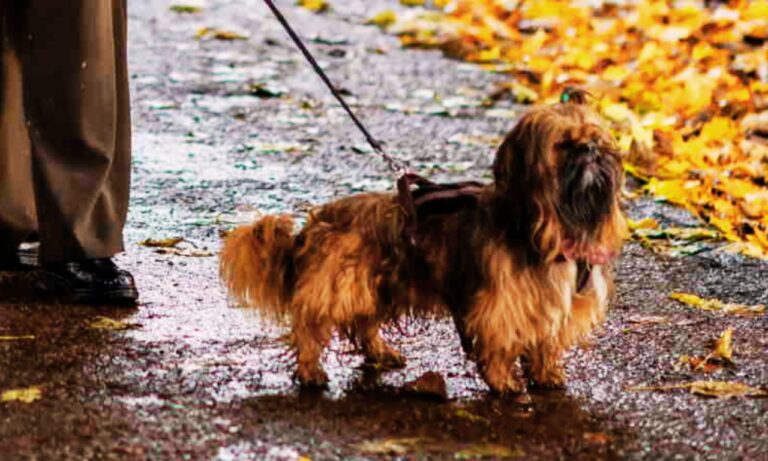Choosing the best collar for a small dog can seem straightforward, but it’s vital to consider a variety of factors. So, what type of collar is best for small dogs? The collar must be comfortable, safe, and fit securely, as small dogs have unique needs compared to larger breeds. For detailed guidance on ensuring the perfect collar fit for your St. Bernard, check out the Best Practices for St. Bernard Collar Adjustment to keep your dog comfortable and secure.
Blog Highlights
ToggleWhat Type of Collar is Best for Small Dogs?
In this comprehensive guide, I’ll explore different types of collars, materials, sizes, and benefits, and analyze each option based on the particular needs of small dog breeds.
1. Flat Collars: Simple and Versatile
Flat collars are a popular choice for many small dog owners. These collars are typically made of materials like nylon or leather and are adjustable to fit neck sizes from 8 to 12 inches, ideal for breeds such as Chihuahuas or Pomeranians.
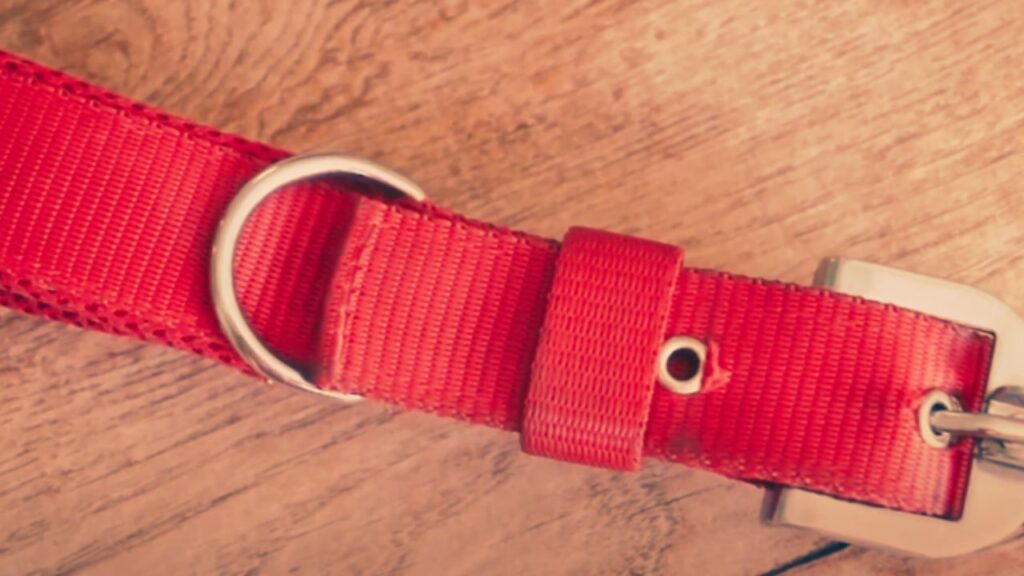
They usually weigh between 0.5 and 1 ounce, keeping the collar lightweight and comfortable for small dogs. Flat collars are often enhanced with reflective stitching or LED lights, which can be visible from distances up to 100 feet, making nighttime walks safer for both the dog and owner. Ensure your Newfoundland’s comfort and security with expert tips on how to ensure a safe collar fit for Newfoundland.
2. Martingale Collars: Better Control with Safety
Martingale collars are especially beneficial for small dogs that tend to slip out of their collars. Known for their gentle tightening mechanism, Martingale collars help reduce the risk of choking by tightening only to a certain extent.

These collars are recommended for small dogs weighing between 10 and 20 pounds and come in sizes suitable for neck circumferences of 8 to 10 inches. The design is particularly useful for breeds like Whippets and Italian Greyhounds, which have narrow heads and can easily escape flat collars.
3. Leather Collars: Durable and Skin-Friendly
Leather collars are prized for their durability and style. A well-crafted leather collar, which typically weighs between 1 and 2 ounces, can last for years if maintained properly. For small dogs with sensitive skin, leather collars with sheepskin padding offer added comfort and minimize the risk of chafing. Discover the ideal fit by learning what size collar for Newfoundland dog to ensure your pet’s comfort and safety.
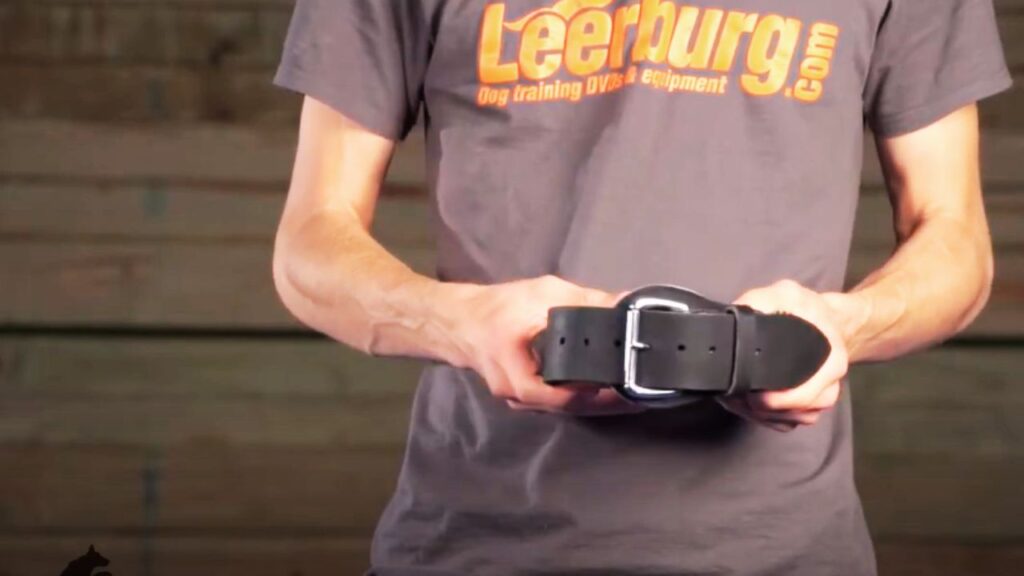
These collars are waterproof, making them ideal for outdoor activities and wet conditions. Leather collars are available in sizes starting from 8 inches, suitable for small breeds like Shih Tzus, whose necks usually measure between 10 and 12 inches.
4. Personalized Collars: Enhanced Safety for Wanderers
Personalized collars offer an additional layer of security, featuring the dog’s name and the owner’s contact information embroidered directly onto the collar. These collars are generally made from nylon and are lightweight, around 0.5 ounces, which is optimal for small dogs under 15 pounds.
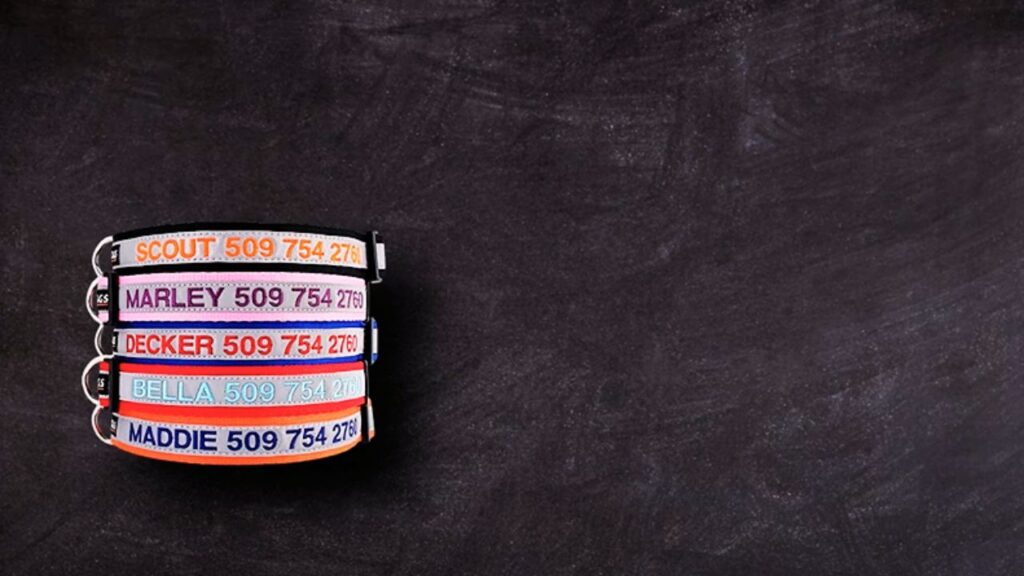
The embroidery is visible from up to 10 feet away, enhancing the chances of a quick reunion if a dog becomes lost. Most personalized collars are available for neck sizes as small as 7 inches, fitting various small breeds. For expert tips on how to fit a collar on a Belgian Shepherd, this guide offers simple steps to ensure your dog’s collar fits securely and comfortably.
5. LED and Reflective Collars: Increased Visibility
For small dogs that walk outdoors in low-light conditions, LED and reflective collars offer crucial visibility. Reflective collars are made from materials like neoprene, with reflective stitching that can be seen up to 100 feet away, while LED collars come with built-in lights powered by small batteries lasting up to 6 hours.
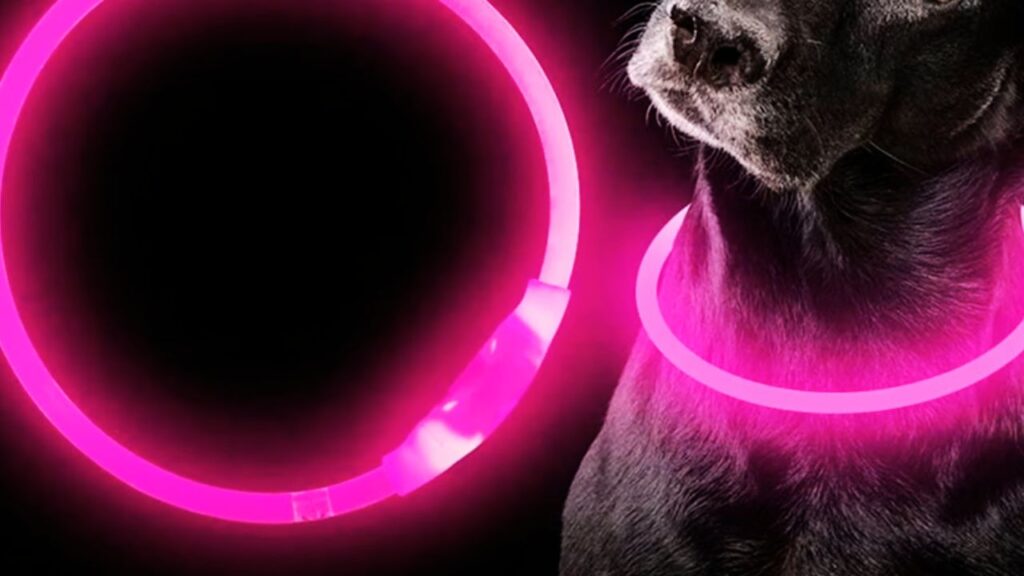
These collars generally fit neck sizes from 8 to 10 inches and weigh around 0.75 ounces, ensuring they’re not burdensome for small dogs during evening outings. For detailed guidance on selecting the correct collar size for a Belgian Shepherd, this article provides essential tips to ensure your dog’s comfort and safety.
6. Harnesses: Reducing Neck Strain
Harnesses are a great alternative to collars, especially for dogs prone to tracheal collapse. For breeds such as Miniature Poodles, whose necks often measure between 8 and 15 inches, harnesses help evenly distribute pressure across the chest, preventing neck injuries.
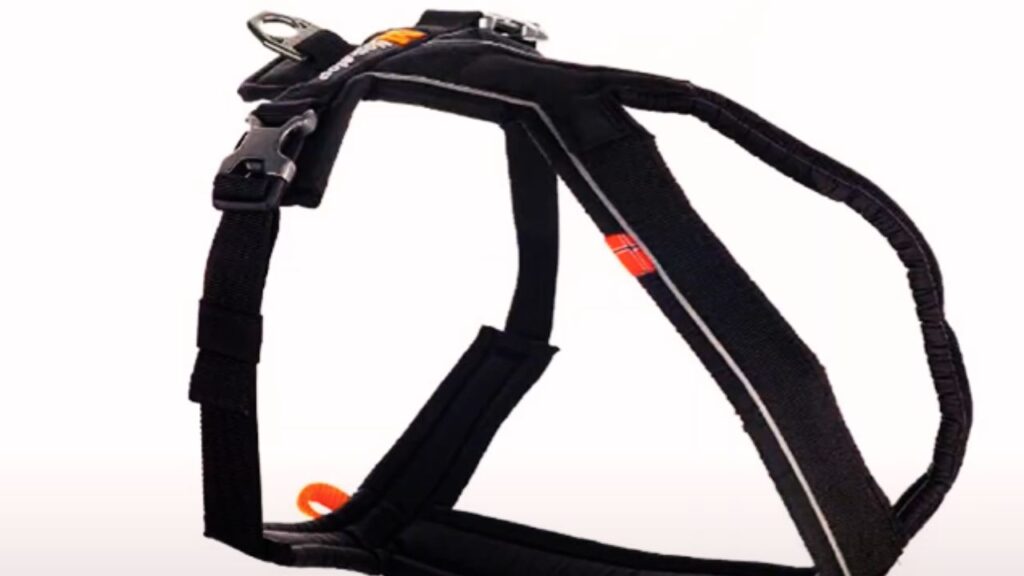
These harnesses weigh between 1 and 2 ounces and come in materials like padded polyester, which provides added comfort. For small dogs weighing up to 20 pounds, harnesses can be a more comfortable and safer choice, particularly during leash training.
7. Flea and Tick Collars: Seasonal Protection
Flea and tick collars are essential for small dogs that enjoy spending time outdoors. These collars, generally weighing about 0.5 ounces, are infused with pest-repelling agents that release gradually over several months. Discover the perfect collar size for an Anatolian Shepherd Dog to ensure comfort and security for your furry friend.

Providing up to 8 months of protection, they’re ideal for small dogs like Yorkshire Terriers or Dachshunds, which usually have neck sizes from 9 to 12 inches. Lightweight and effective, flea collars add minimal weight and discomfort while ensuring your pet stays pest-free during peak flea and tick seasons.
8. Calming Collars: A Solution for Anxious Dogs
If your small dog suffers from anxiety, calming collars infused with natural herbs, such as lavender and chamomile, can provide relief. These collars are suitable for small dogs with neck sizes from 8 to 10 inches and weigh around 0.5 ounces, making them comfortable and non-invasive.
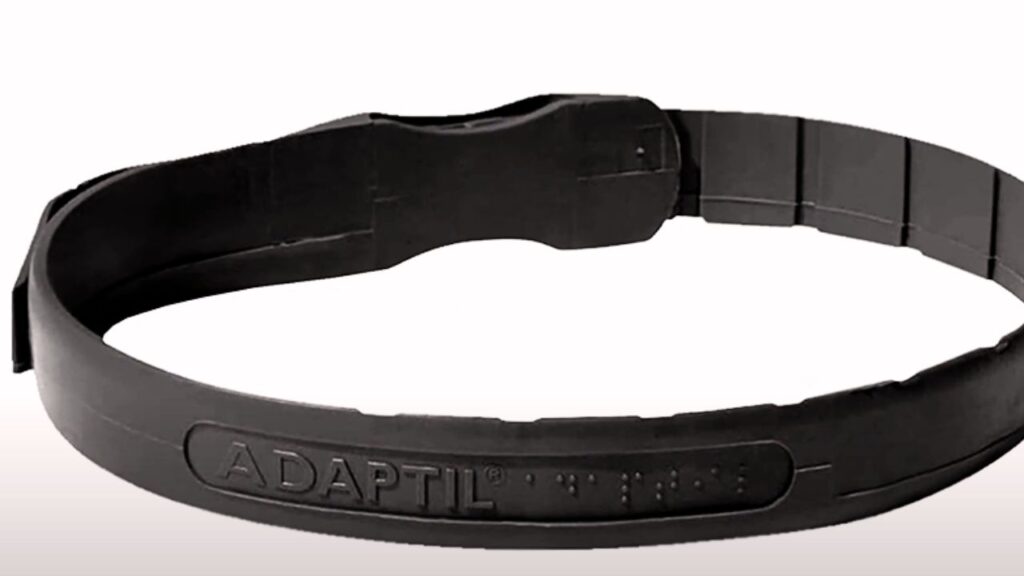
Most calming collars last for up to 30 days before needing replacement. They’re an affordable, simple way to alleviate stress for small dogs, especially during travel, thunderstorms, or vet visits.
9. Prong and Shock Collars: To Avoid for Small Breeds
Prong and shock collars are sometimes used for training larger, strong-willed dogs, but they can be harmful for small breeds. Prong collars have pointed metal links that press into the neck when tension is applied, while shock collars deliver a mild electric pulse.
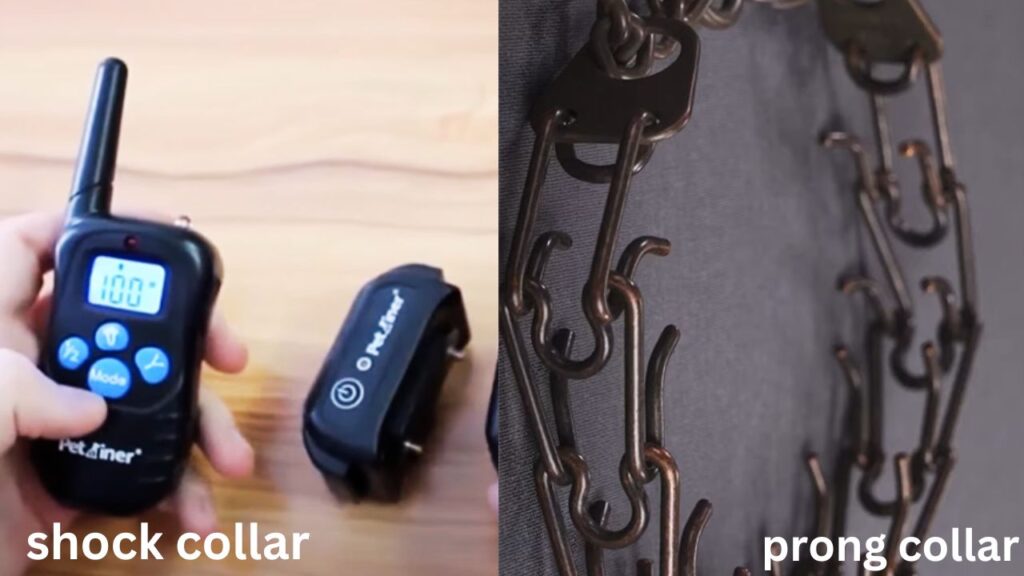
These collars aren’t recommended for small dogs under 15 pounds, as they can cause severe neck injuries. Alternatives, like positive reinforcement training, are generally safer and more effective for small dogs. Learn more about the unique double-layered coat of an Anatolian Shepherd and how to care for it effectively.
Choosing the Right Material and Size
When selecting a collar for a small dog, consider both material and fit. Lightweight materials like nylon are affordable and comfortable, while leather offers enhanced durability and style. Measuring your dog’s neck is essential: for most small breeds, leave about two fingers’ space between the collar and the neck to ensure a snug yet comfortable fit. This precaution reduces the risk of choking and provides adequate movement without causing harm.
1. Importance of Width and Adjustability
For small dogs, collar width is just as important as the circumference. Many small breeds, such as Pomeranians and Miniature Schnauzers, have delicate neck structures. Collars that are too wide, over 1 inch, may cause discomfort and restrict movement.
Generally, collars for small dogs are between 5/8 and 1 inch in width, providing the best balance between support and comfort. Adjustable collars are particularly beneficial for puppies or breeds prone to weight fluctuations, allowing for easy resizing without the need for a new collar.
2. GPS and Smart Collars: Advanced Tracking
Technology has introduced GPS and smart collars to track your dog’s location in real time. For small dogs that are prone to escape or have a strong prey drive, GPS collars are a safety net. For insights on whether Pomeranians should wear a collar, including considerations for safety and alternatives, check out this informative article.
Although they’re heavier, often around 1.5 ounces, and not ideal for everyday use, these collars can track a dog up to 5 miles away. Small dog owners should look for models designed for pets under 20 pounds, ensuring that the additional weight doesn’t burden the dog.
3. Special Considerations for Small Breeds with Health Issues
Certain small breeds, such as Pugs and French Bulldogs, are prone to tracheal issues, making it essential to avoid collars that apply direct pressure to the neck. For these breeds, harnesses are preferable over collars, distributing weight across the chest and back rather than the neck. If a collar is necessary, soft, padded options like leather or neoprene minimize pressure on sensitive areas.
4. Training Collars: Martingale and Head Collars
Martingale collars are often used in training, as they apply gentle pressure to guide the dog without choking. For small dogs prone to pulling, like Dachshunds, these collars provide a more secure option, preventing slipping and reducing strain on the neck. Head collars are another option for training but should be used cautiously.
While effective in redirecting attention, head collars can be uncomfortable for some dogs and should only be used under guidance to avoid causing injury. For a comprehensive guide on what kind of harness is best for a Pomeranian, including comfort and safety tips, check out this article.
Choosing a Collar Based on Dog Age and Activity Level
A small dog’s age and activity level also influence the ideal collar type. Puppies under six months require flexible, lightweight collars since they grow quickly and may need resizing every few months.
- Soft nylon or adjustable collars, weighing around 0.5 ounces, are gentle on a puppy’s delicate neck and can be resized to fit necks ranging from 7 to 12 inches as the puppy grows. Additionally, puppies are often more active and may chew on their collars, so opting for durable yet affordable materials like nylon is recommended to prevent frequent replacements.
- For older dogs, comfort and accessibility are crucial. Senior dogs may benefit from collars with quick-release buckles, as they’re easier to put on and take off, especially if the dog has arthritis or limited mobility.
- Lightweight padded collars, weighing between 1 and 1.5 ounces, offer support without straining older dogs’ necks, particularly for breeds prone to neck issues, such as Miniature Schnauzers or Shih Tzus. Dogs with decreased activity levels or sensory impairments may also benefit from GPS collars, as these allow owners to track their location if they wander off unexpectedly.
- For active small dogs who frequently engage in outdoor activities, sturdy materials like leather or neoprene are ideal. Neoprene collars, often used in water-resistant designs, are durable and easy to clean, making them perfect for dogs who enjoy outdoor play.
- Reflective collars with LED features enhance visibility for active dogs on early morning or late night outings, adding an essential layer of safety.
Final Words
Selecting the right collar for a small dog is about finding a balance between comfort, control, and safety. Flat collars are perfect for everyday use, while Martingale collars offer extra control. Personalized collars improve safety, LED collars enhance visibility, and harnesses are ideal for dogs with neck sensitivities. Hope so, now you know what type of collar is best for small dogs?
Leather collars are durable, while nylon is lightweight and affordable. Small dog owners should also consider specialized options, like flea collars and calming collars, based on their pet’s unique needs.
Discover if the American Eskimo is a guard dog and learn about its suitability for protecting your home.

